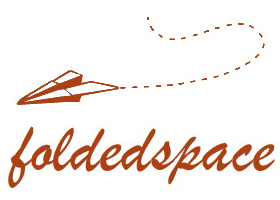Recently, I met Charlie Gilkey for lunch at Jade Teahouse. Over noodles and vietnamese stew, we talked about blogging. (Charlie runs a site called Productive Flourishing, which contains “strategies for thriving in life and business”.) And we talked about e-mail.
Junk food may be one of my biggest weaknesses, but e-mail is nearly as bad. I get a lot of e-mail, and I do a poor job of processing it. I try to reply immediately to friends and family, but it usually takes me far too long to reply to everyone else, even when the messages are important.
As I described this weakness to Charlie, he was sympathetic. I told him how I’d watched Chris Guillebeau blitz through e-mail during our cross-country train trip in April. Chris is a master of efficiency (thanks in part to Text Expander, which allows him to type “/WDSreply” and immediately get a prepared three-paragraph reply).
Charlie gave me some quick tips for handling e-mail, including:
- Use filters. I already filter many of my messages. Get Rich Slowly e-mail is routed to its own box. Comic book e-mail is routed to its own box. All of the e-mail for Kris’s liberal causes is routed to its own box. (Or, in the case of MoveOn.org, directly to spam.)
- If you open it, act on it. Instead of opening a message and then hemming and hawing about it for the next few days, act on it immediately. If it requires work, put it in a separate folder. But if it gets opened, it gets pulled from the inbox.
- And, most of all, make e-mail responses brief. Except when rambling to friends (like when I’m writing to Mac and Pam about running, for example, or when I’m writing to the geeks about Tron), the best way to expedite e-mail is to write short, meaningful replies.
As an example of how Charlie implements that last rule, take a look at this post, in which he explains why he writes brief e-mails. (He links to this post from the signature of every e-mail he sends.) After our lunch, he wrote an expanded explanation of his method.
To quote Charlie:
My brief email message is just me…ensuring that I don’t bottleneck the conversation. I’m happy to have deeper and extended conversations with you, and you aren’t something I’m trying to get out of my Inbox. Please continue the conversation if it’s appropriate, and feel free to write in whatever length and style that feels comfortable for you. I don’t want my anti-bottlenecking practice to bottleneck you.
All of this is to say, I’m moving to the brief e-mail model. I’m going to do my best to give folks timely replies to their e-mail, but my responses may be short. It’s not because I don’t care, but because I do care.

This might be useful…
In Gmail, go to Google Labs (little icon in the top right corner, to the left of “settings”).
Somewhere in Google Labs is an option for “Canned Responses.” It is a great little tool.
In my e-mail, next to the link to add an attachment is a drop-down menu for canned responses. Basically, you type up something that you plan to use frequently and save it. Then it’s there for you whenever you need it.
For my business, for example, I have one called “first session” that includes all of the information a new client would need about their first session. Saves a ton of typing.
Since Gmail isn’t tidy about hyperlinks in their sigs, you can also put in a hyperlink and save it in a canned response, and it’ll show as a link instead of a URL in your message. (That was the original reason I opted in to this feature, as I wanted my website as a hyperlink in my sig, but Google only allowed it as a URL.)
For whatever that’s worth…
I let too much blog email sit around as well instead of responding to it in a timely fashion. I appreciate Heather’s tip about canned responses in gmail and will set some up.
Love it when I learn something I can put into practice!
I have used, and loved, TextExpander (and before that, SpellCatcherX) for this sort of thing. Unfortunately, TextExpander was causing unacceptable keyboard slowdowns – to the point where there would be a lag before text would show up on the screen when typing, and then the letters would sometimes get jumbled up out of order. I’ve since disabled it, but miss it dearly, and need to find a workable replacement.